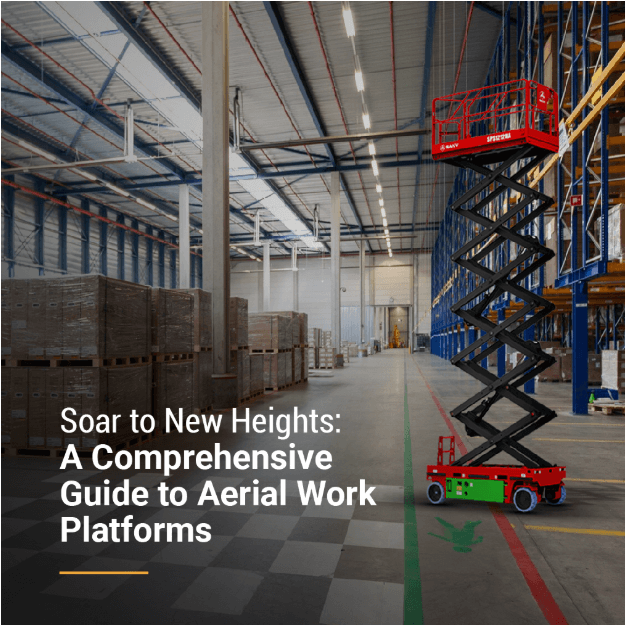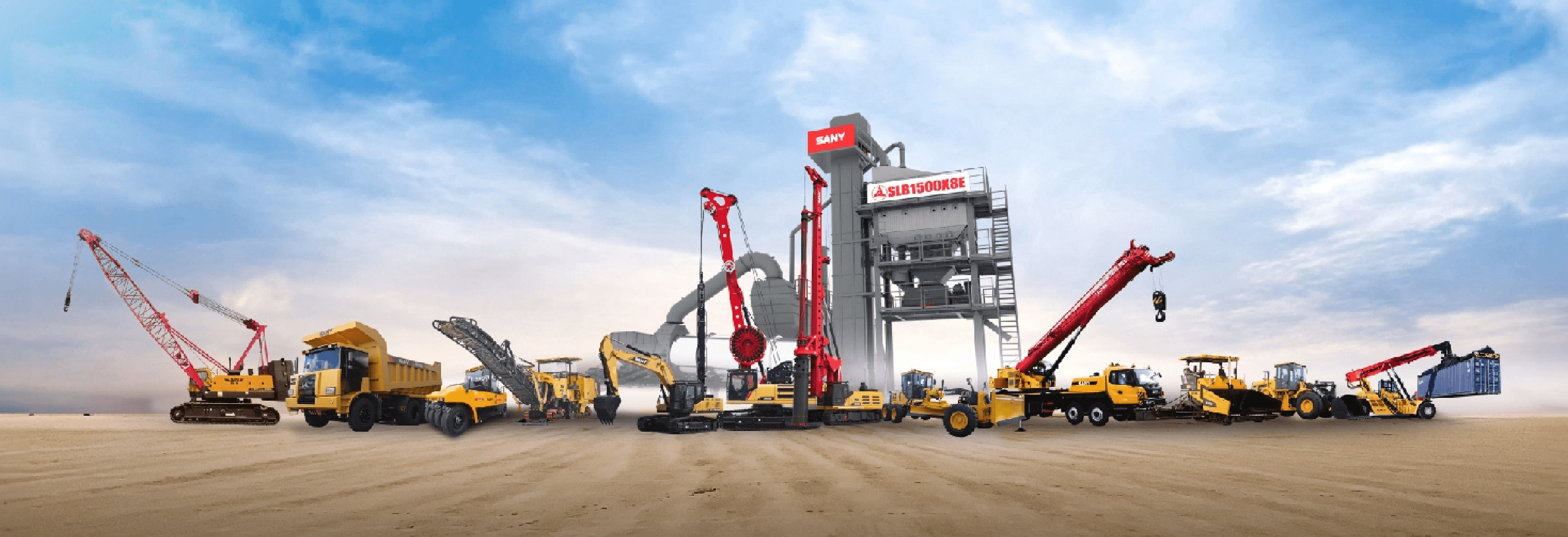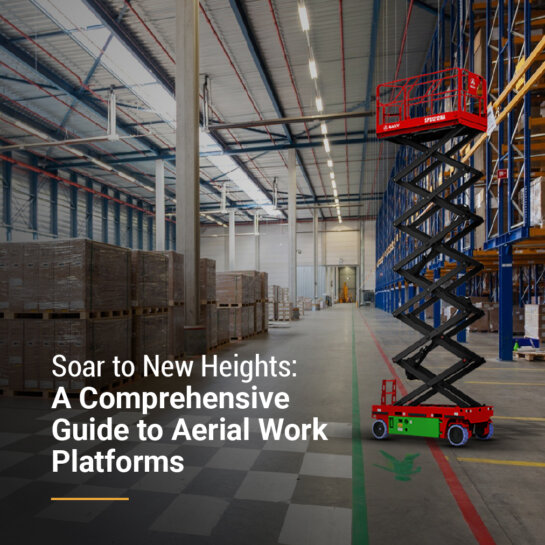Soar To New Heights: A Comprehensive Guide To Aerial Work Platforms
Category: Aerial Work Platform | 28 February 2025

In the ever-evolving landscape of construction, maintenance, and industrial operations, Aerial Work Platforms (AWPs) play a crucial role in reaching new heights—literally and figuratively. This comprehensive guide delves into the various types of AWPs, their essential safety features, and best practices for maintenance and inspection. Whether you are an industry professional, facility manager, or simply interested in the mechanics of high-access equipment, this guide will provide valuable insights into selecting, operating, and maintaining AWPs to ensure safety, efficiency, and optimal performance.
What is an Aerial Work Platform (AWP)?
An Aerial Work Platform (AWP) is a mechanical device designed to provide elevated access for personnel and equipment to perform tasks at height. Commonly referred to as aerial lifts, these platforms include various types such as scissor lifts, boom lifts, and personnel lifts. They are equipped with a platform or basket supported by hydraulic, pneumatic, or mechanical systems that allow for vertical and horizontal movement. AWPs are utilized in construction, maintenance, and industrial applications to enhance safety and efficiency when working at elevated positions, adhering to strict safety standards and operational guidelines.
Types of Aerial Work Platforms
Aerial Work Platforms come in various options, offering easy accessibility for different use cases. Some are optimized for indoor or outdoor use, some for people or equipment, and some for flat or rough surfaces. Here are some of the most common types of Aerial Work Platforms.
Scissor Lifts
Scissor lifts have a platform that rises vertically using a crisscrossing mechanism of linked, folding supports. They offer stable, high-reaching access for tasks requiring substantial horizontal workspace and are ideal for indoor use or flat surfaces.
Boom Lifts
Boom lifts feature a platform mounted on an extendable arm or boom, which allows both vertical and horizontal reach. They come in two main types: telescoping (straight) and articulating (knuckle) booms, providing flexibility for accessing hard-to-reach areas.
Vertical Mast Lifts
These compact lifts have a narrow base and a vertical mast that extends upwards, offering access to high places in tight spaces. They are suitable for indoor applications and are often used for maintenance tasks.
Personal Lift Platforms
Designed for individual use, these lifts are typically smaller and more portable. They provide access to elevated areas with limited space and are used for tasks like shelving, lighting maintenance, and other small-scale applications.
Trailer-Mounted Lifts
Also known as tow-behind lifts, these are mounted on a trailer and can be towed to different locations. They offer high reach and are often used for outdoor tasks, such as building maintenance and signage installation.
Choose The Perfect Aerial Work Platform
It is necessary to understand your requirement, to choose the perfect Aerial Work Platform. Here are a few aspects you should consider when choosing an AWP.
Factors To Consider
Every workspace requires different features. Here are some factors you should consider to choose the best fit for your workspace.
Height & Reach – The purpose of an AWP is to give easy access to elevated areas. It is important to consider the exact height you need to reach. Similarly, you also need to consider the horizontal reach – how far does the platform need to extend to reach the workspace. This is especially necessary where direct vertical access is not possible due to obstacles.
Weight Capacity – Consider the total weight of personnel, tools, and materials required, and ensure it doesn’t exceed the AWP’s maximum weight capacity. Overloading the AWP can pose safety risks to personnel and equipment and may also lead to equipment failure.
Mobility – Consider whether a stationery or a mobile platform is required, based on the nature of the work. If the job requires movement across the job site, a self-propelled or a vehicle-mounted AWP would be better suited; otherwise, a simple static AWP should get the job done.
Safety Features
Ensuring safety while working at heights is crucial. When selecting an aerial work platform, consider the following safety features:
Guardrails: Essential for fall prevention, guardrails are a fundamental safety component on all aerial work platforms. They create a protective barrier to prevent operators from accidental falls or slips off the platform.
Emergency Stop Buttons: These buttons enable operators to swiftly shut down the equipment in an emergency. Positioned for easy access, they ensure a prompt response to any dangerous situation that may arise.
Tilt Sensors and Alarms: These systems continuously monitor the platform’s angle, providing alerts if it becomes unstable, such as during overextension or on uneven surfaces. This proactive warning mechanism helps avert potential tip-overs.
Stabilizers and Outriggers: These components are crucial for enhancing platform stability, particularly on uneven or soft ground. By broadening the base of support, stabilizers and outriggers minimize the risk of tipping and contribute to safer operation.
Maintenance and Inspection
Regular maintenance and thorough inspection are essential for the safe operation of aerial work platforms (AWPs). Key aspects include:
Routine Checks: Frequent inspections are crucial for detecting and addressing potential mechanical or structural issues before they pose safety risks. These checks should encompass hydraulic systems, electrical components, safety devices, and structural elements, looking for any signs of wear, damage, or malfunction.
Compliance with Standards: Ensuring that the AWP adheres to industry safety standards is imperative. This involves aligning the equipment with regulations set by occupational health and safety authorities, which govern design, maintenance, and operational practices.
Record Keeping: Keeping comprehensive records of all inspections, maintenance activities, and repairs is essential for safety compliance and operational efficiency. These logs provide a detailed history of the AWP’s condition and maintenance, aiding in effective upkeep and demonstrating adherence to safety regulations.
Conclusion
Aerial Work Platforms are one of essential equipment for maintenance, warehouse management, and construction. Enabling access to elevated work platforms, AWPs allow you to efficiently utilize vertical space and perform critical tasks. It is necessary to understand your requirements based on the nature of work and use that guide in deciding which AWP is the best fit for you. Sany India is a renowned global manufacturer of construction and industrial machinery. With a strong presence in various markets worldwide, Sany has established itself as a trusted provider of high-quality construction equipment.


